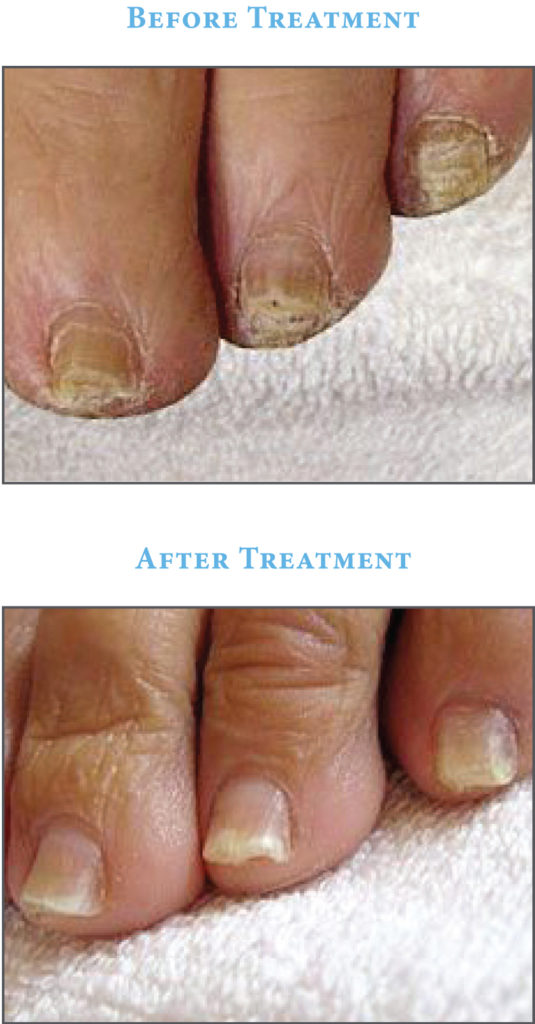Nail infection fungus treatment
What can you expect from the procedure?
 One day before the procedure it is important to remove all nail polish and decorations. The procedure itself involves passing the laser beam over the infected nails and surrounding skin tissue. A single procedure session usually takes approximately 35-45 minutes for 5-10 nails. The required number of procedures will vary depending on the severity of the infection. Procedure times may vary, so please consult your physician for more information. Most patients describe the procedure as being comfortable with the nail feeling warm during the procedure. Following the procedure your nail may feel warm for a few minutes. There is a possibility of transient slight discoloration of the nail after procedure. Most patients can resume normal activities immediately. The majority of patients show improvement after a single procedure session. Successful procedure will result in a growth of a new, healthy nail. Due to slow growth of the nail, it may take up to 1 year to see an entirely clear nail. After the procedure you will need to continue with home care techniques in order to reduce the chance of recurrence of the infection as advised by your physician. There is a chance for reinfection due to the presence of causative agents everywhere in our environment.
One day before the procedure it is important to remove all nail polish and decorations. The procedure itself involves passing the laser beam over the infected nails and surrounding skin tissue. A single procedure session usually takes approximately 35-45 minutes for 5-10 nails. The required number of procedures will vary depending on the severity of the infection. Procedure times may vary, so please consult your physician for more information. Most patients describe the procedure as being comfortable with the nail feeling warm during the procedure. Following the procedure your nail may feel warm for a few minutes. There is a possibility of transient slight discoloration of the nail after procedure. Most patients can resume normal activities immediately. The majority of patients show improvement after a single procedure session. Successful procedure will result in a growth of a new, healthy nail. Due to slow growth of the nail, it may take up to 1 year to see an entirely clear nail. After the procedure you will need to continue with home care techniques in order to reduce the chance of recurrence of the infection as advised by your physician. There is a chance for reinfection due to the presence of causative agents everywhere in our environment.
